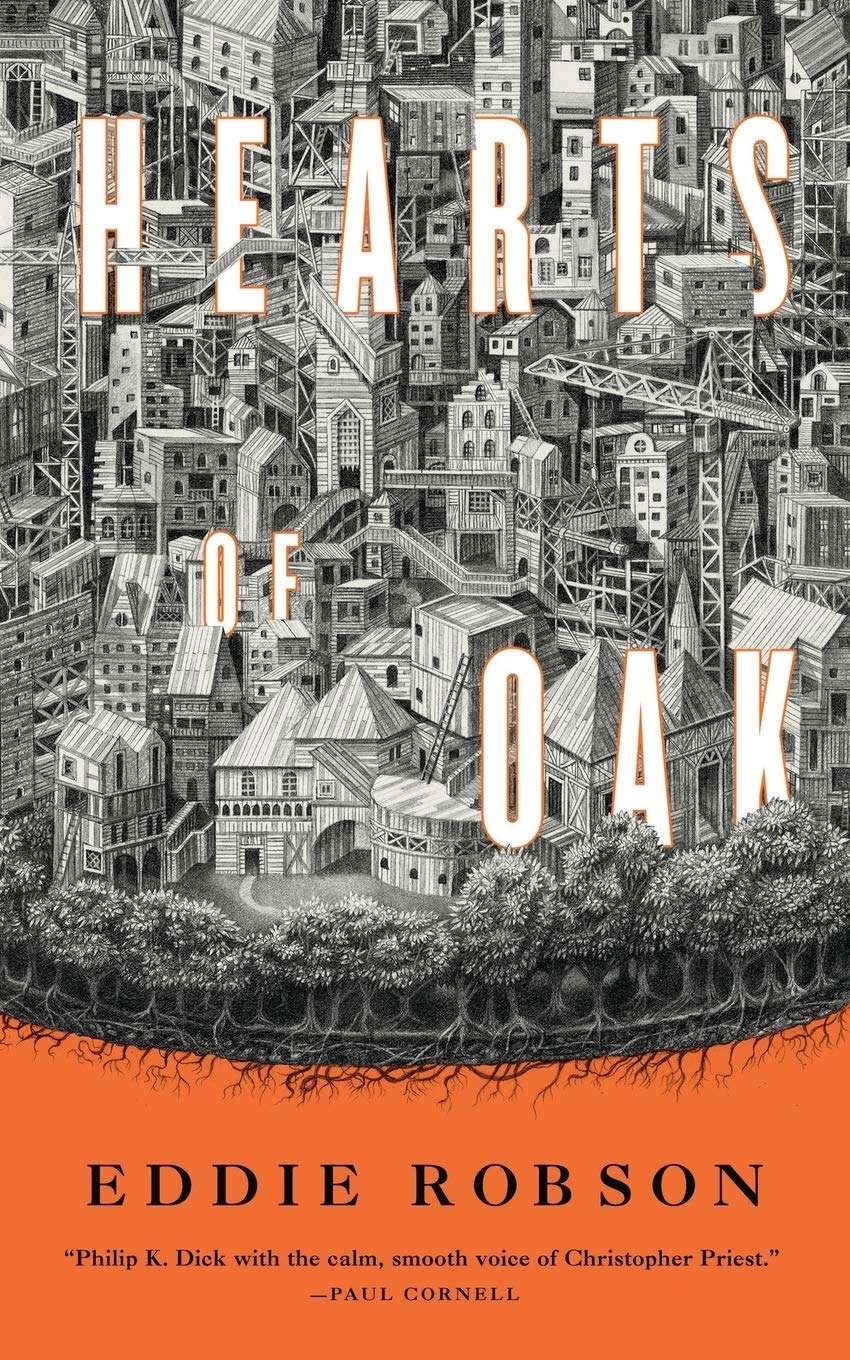Hearts of Oak, by Eddie Robson
This book had me at its opening lines:
“The king glanced across his chambers and saw his morning letter had arrived. He picked it up off the floor and was surprised by its weight. He turned it over in his hands. ‘It’s a thick one today,’ the king said to his cat.
‘I know,’ agreed his cat, who was large and ginger and called Clarence.”
So much can be gleaned from the opening lines of a book, and from the onset this one spoke of simplicity, directness, and things being just a bit off kilter. This is not only the form of Hearts of Oak, but it is what the story is built upon.
Ultimately, it’s the story of Iona, who had been the leading architect in the city, and who now teaches classes on design and planning. The building of things is very important in the city, and the city always seems to need bigger and more diverse buildings. But when a building under construction collapses (due to an error in calculation at the construction site) and nine people are killed – including major architect and one of Iona’s closest collaborators – suddenly things seem…. off, somehow. Or at least, she seems more aware of things that have always felt off.
Time passes, and these instances of things not being exactly normal increase, but it feels like to Iona that she’s the only one who sees them. Or if others see them, they act as if they don’t, or quickly move on. What seems obvious as strange to her is dropped so quickly, she begins to question if she really saw something so bizarre after all – even though she knows she has.
But just when you think you have a clear idea of where this book is going – say, the reason why things seem off – author Eddie Robson takes that and builds upon it with another layer of plot, making the exposure of what

comes before simply another layer to the story. Or, another storey on the structure of the book. And then he does it again. And again. It’s not that you are kept guessing, or trying to anticipate where he is taking you. It’s just that the story moves through one plotline and into another without losing the taste or feel of where you started.
It’s tremendously entertaining – not the characterizations or the plot or the action or the narrative or the twists or the reveals. None of them in and of themselves is overtly gripping, although all are intriguing and consistently… consistent. But taken as a whole, they make for a very entertaining read, and one quite different – pleasantly so – from many that share its genre shelf.
—Sharon Browning

